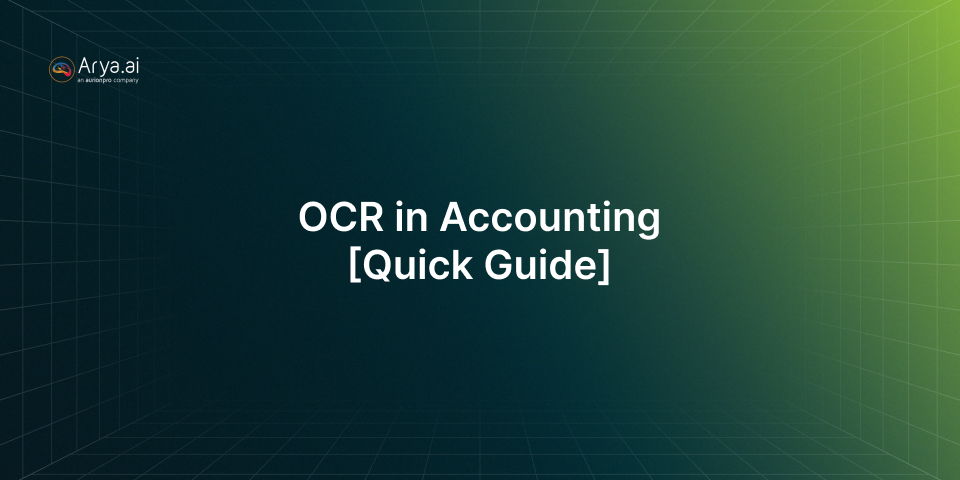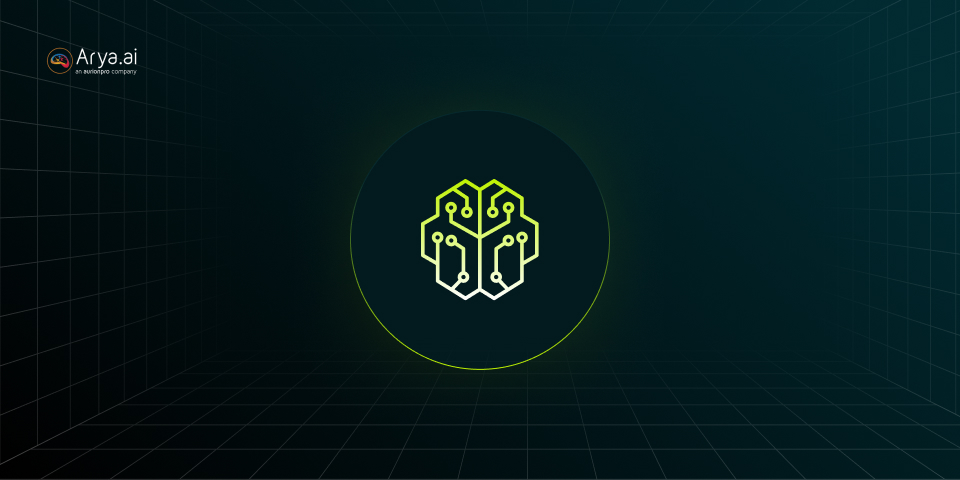
Organizations need to get several things right when processing invoices, including the date, payment, and address. One small mistake can delay invoice processing, leading to damaged supplier relations, compliance issues, delayed payments, and inefficient workflows.
Hence, when dealing with hundreds and thousands of customers/vendors/suppliers, processing invoices manually can lead to high error rates and hinder the business’s efficiency. Statistics suggest that the average time required to process an invoice manually is 14.6 days.
This is where automating the invoice processing and data extraction process and investing in technologies like Optical Character Recognition (OCR) and Deep Learning plays a huge role.
What is Invoice Data Extraction?
Invoice data extraction is the process of identifying and retrieving key data points in an invoice. The extracted data can then be used for multiple purposes, such as accounting, payments, procurement, reporting, and financial analysis.
The accounts team is the primary beneficiary of invoice data extraction. They use this data to validate transactions and cross-check them against delivery receipts and purchase orders, ensuring timely and accurate payments.
Types of Data Extracted From Invoice Data Extraction
Invoices contain a wealth of information that needs to be accurately extracted as each data serves distinct purposes, like financial tracking and analysis. Here are the details that can be extracted from invoice information extraction:
- Vendor information, such as vendor name (organization), address, contact number, and tax identification number (TIN).
- Customer details, such as name, contact number, and billing and shipping address.
- Line item details, such as the product name, descriptions, quantity, unit price, and total costs.
- Invoice details, including invoice number, invoice date, due date, and purchase order number (if applicable).
- Payment terms and currency, such as payment method, payment terms, early payment discounts, taxes, and total amount.
- Banking details, such as bank name, account number, IFSC code, and routing number.
Common Challenges in Invoice Data Extraction
Invoice data extraction presents several challenges for the following reasons:
- Diverse invoice formats: Organizations receive invoices in various formats, including PDFs, scanned images, paper receipts, electronic forms, Excel spreadsheets, and handwritten invoices. This leads to inconsistency and complicates data extraction for invoices due to different templates.
- Data complexity issues: Invoices consist of complex data along with structured and unstructured data structures, such as invoice numbers, dates, notes, terms, and descriptions. Extracting details from such complex data gets challenging and requires sophisticated processing.
- Quality of scanned invoice documents: Skewed texts, poor-quality scans, blurred images, and low-resolution documents highly impact data extraction accuracy, resulting in inaccurate and incomplete data capture.
- Data security: Confidential information, such as the customer’s banking details, addresses, etc., requires strict security measures. However, maintaining data privacy during invoice data extraction can get challenging, especially when small businesses and enterprises cannot afford robust security solutions.
- Integration with existing systems: Integrating the extracted invoice data with existing systems, such as ERP or accounting systems, can be challenging due to incompatibility issues.
Common Ways To Extract Data From Invoices

Here are the most common approaches organizations take for invoice data extraction:
1. Manual Invoice Data Extraction
As straightforward as it sounds, manual invoice data extraction is the traditional method of manually reviewing the invoice details and inputting (copy-pasting) the data into an accounting or enterprise system.
Small businesses with a low volume of invoices often use this method to extract data from invoices. However, it is quite time-consuming and prone to manual errors.
2. Optical Character Recognition (OCR)
The OCR technology scans and interprets printed or digital text from invoice PDFs, documents, and digital images and converts the extracted text into machine-readable data.
For instance, OCR in banking uses advanced algorithms and character recognition features, such as distinguishing fonts and handwritten texts, making data extraction a breeze and reducing manual overload.
3. Template-Based Invoice Data Extraction
Template-based extraction method uses predefined invoice templates to extract data from invoices with specific formats and layouts.
It compares the invoice layout with the template to extract relevant data—which is beneficial for organizations working with specific vendors with structured and standardized invoices.
4. Intelligent Data Extraction (AI/ML)
This method is gaining popularity as it uses Artificial Intelligence (AI) and Machine Learning (ML) algorithms to make a system learn various invoice formats and layouts, identify trends, and remove irrelevant/outdated information to intelligently identify invoice fields without relying on preset templates. This is essentially built on Intelligent Document Processing
Since AI and ML models improve with time, this method is beneficial for organizations dealing with invoices with different layouts and formats—making the method highly flexible and adaptable.
5. API Integration-Based Data Extraction
Application Programming Interface (API) integration involves using two software systems, such as accounting and invoicing systems, and an API integration that automates data extraction or retrieval.
This enables real-time and seamless data extraction and is beneficial for businesses using accounting and invoice management software, offering API integration capabilities.
6. Hybrid Techniques
As the name suggests, this technique involves using multiple techniques, such as OCR, ML, and rule-based extraction.
This ensures maximum data accuracy and is highly adaptable for invoices with different formats and specifications.
How Can Arya AI Help With Invoice Data Extraction?
To ensure seamless and error-free invoice data extraction, at Arya AI, we offer an invoice extraction App, that helps businesses and banks automate their workflows.

This tool extracts information from e-invoices and intelligently classifies the data into relevant fields, including vendor information, billing and shipping, invoice and due dates, and purchase order ID for several invoice formats and receipts with high accuracy.
Thus, you can easily integrate this API within your existing systems and eliminate around 80% of manual reviews—boosting productivity and team efficiency.
Below is a sample example of the result our invoice extraction API provides to facilitate decision-making and further data analysis and processing.

Conclusion
Automating workflows such as data extraction and enhancing business efficiency is critical to reducing time, costs, and labor, improving customer experience.
By automating invoice data extraction, organizations can significantly improve their data quality, streamline operations, reduce errors, lower invoice processing costs, and meet regulatory costs.
With Arya AI’s invoice extraction, you can significantly reduce manual intervention in invoice processing by seamlessly integrating our app with your existing systems and workflows. So, check out the App to get a free trial or contact us to learn more.





.png)





.png)




.png)

.svg)


